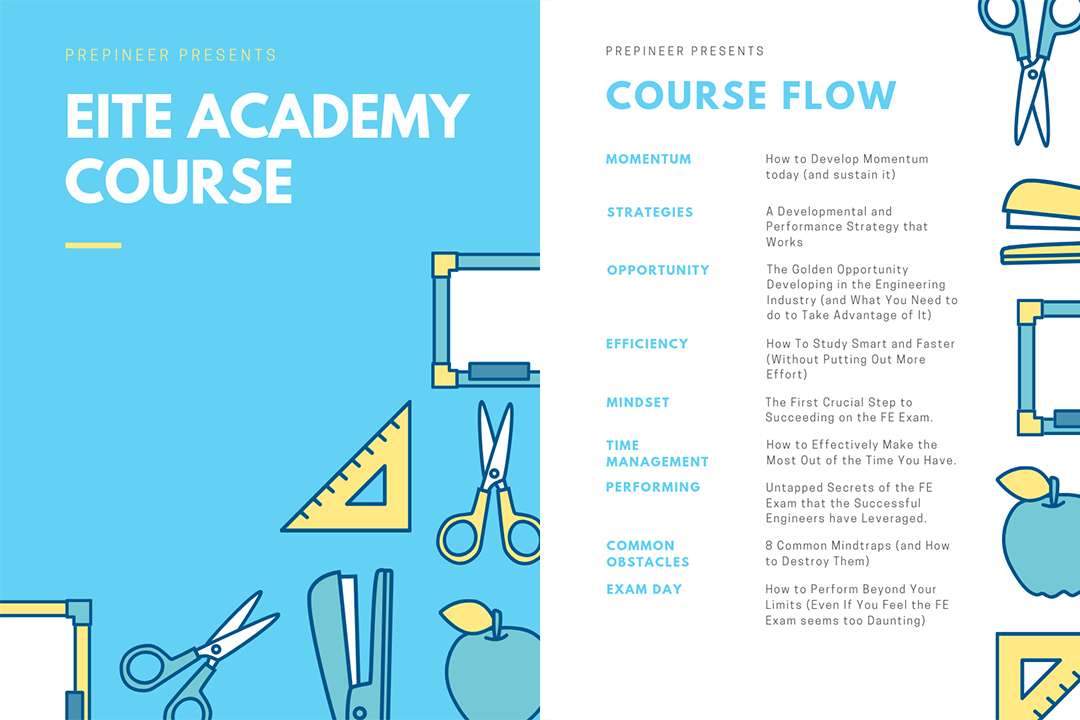The FE Exam is the first of two exams one will take in route to becoming a licensed professional engineer.
The goal of this milestone is to ensure adequate understanding across a wide range of fundamentals from our engineering education.
From the basics of Math through the more discipline specific subjects such as Geotechnical (Civil), Machine Design (Mechanical) and Digital Systems (Electrical), one will be tested on a range of knowledge that spans the entirety of your undergraduate coursework.
The FE Exam itself is composed of 110 questions in the form of Multiple Choice coupled with the newer formats referred to as Alternative Item Type problems.
These newer problems types, referred to as AITs, were introduced back in 2017 and include MULTIPLE CORRECT OPTIONS, DRAG & DROP, POINT & CLICK and FILL IN THE BLANK.
You can read more about these problem types here:
Alternative Item Type Problems
When it comes go-time, you will have a total of 5 hours and 20 minutes to complete all 110 problems with a 25 minute scheduled break occurring somewhere around the midpoint of the exam.
To expand on this whole “somewhere around”, the literal midpoint obviously lands at the 55 problem mark – but your scheduled break as defined by your particular exam may fall somewhere slightly before or slightly after this point.
For some, the break may come after question 53 while others it may come after question 56…but generally speaking, it’s somewhere around the 55 question mark.
At whatever point your scheduled break falls, you will be met with an automated queue that will pop up and let you know that you’re at the “halfway point” of the exam.
We go in more detail about the particulars of the Scheduled Break in this article.
Leading up to the scheduled break, you will be presented with problems in the realm of foundational engineering fundamentals such as Mathematics, Probability and Statistics and Engineering Economics.
The second set of questions will typically be a deeper dive in to the engineering discipline specific subjects of Civil, Mechanical, Electrical, or whatever your specialization is.
Though the NCEES no longer divides the exam in to two parts – morning and afternoon – as it did pre-2014, we can still say that the form generally runs the same. In the first half of the exam you will be tested on your breadth of knowledge revolving around the general engineering foundational subjects whereas in the second half you will tested on your depth of knowledge in the subjects of your chosen discipline.
The “depth” portion of the exam is typically what trips up most students, but we have a strategy that has shown a lot of success across all engineering backgrounds, you can read about it here:
Though how the exam is laid out and when we have to take it (post-academia) can be quite overwhelming, slowing down and thinking outside that box can typically set us on the path towards success.
You got this! 🙂





